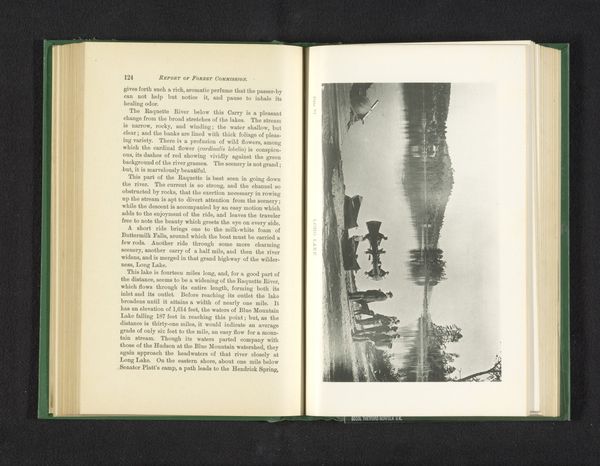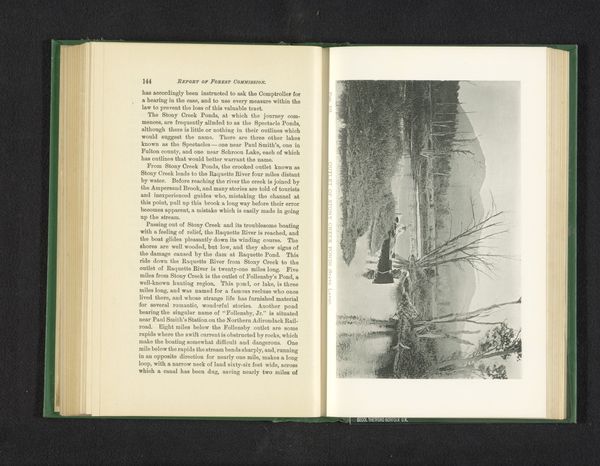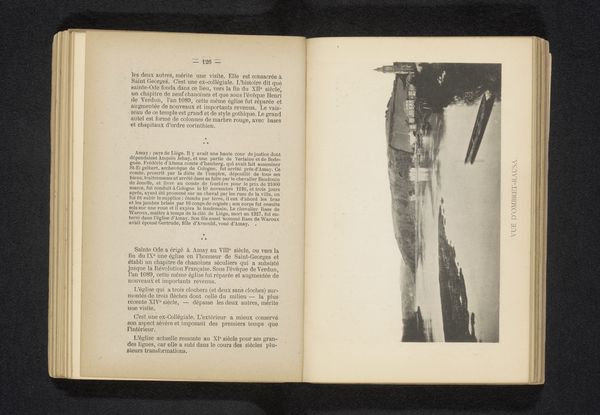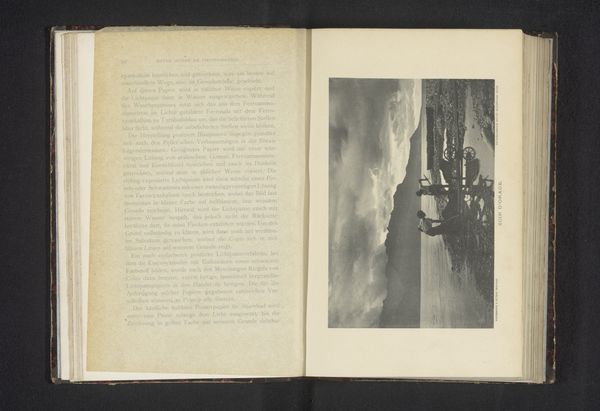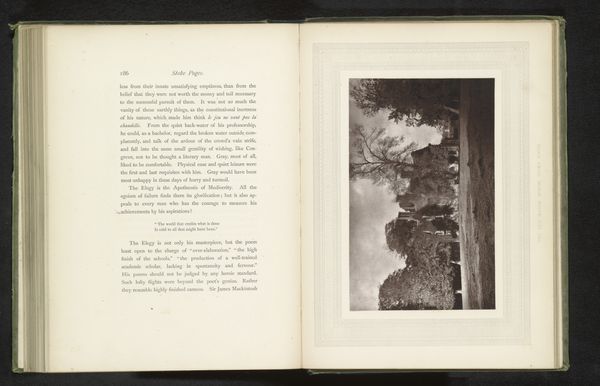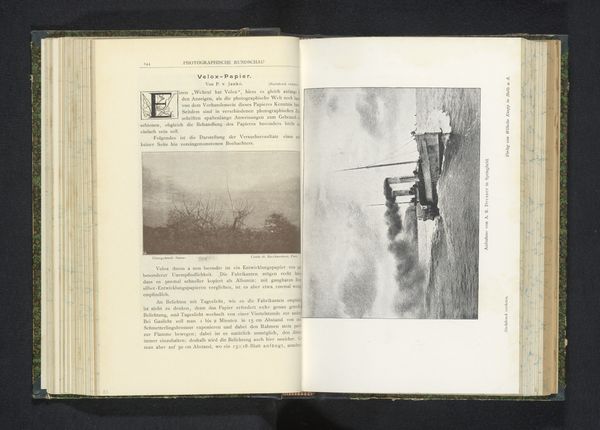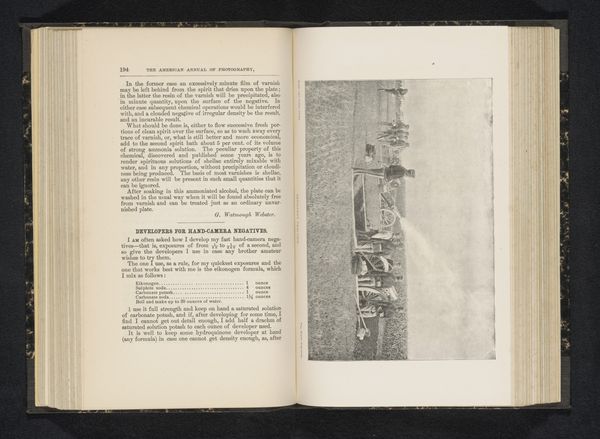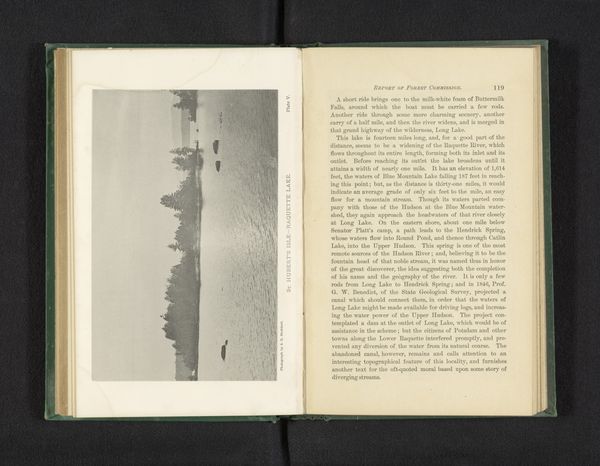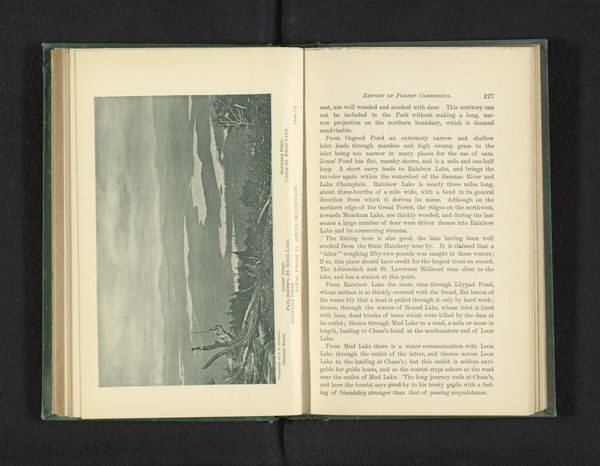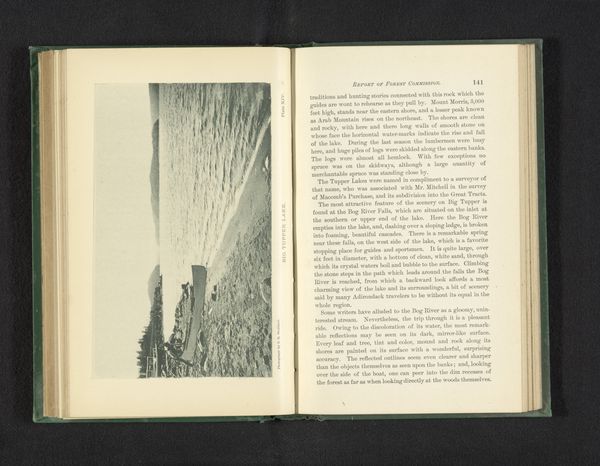
Dimensions: height 113 mm, width 175 mm
Copyright: Rijks Museum: Open Domain
Curator: Here we have Seneca Ray Stoddard’s “St. Hubert's Isle-Raquette Lake,” a gelatin-silver print from 1891. Editor: It's striking how the stark contrast emphasizes the stillness, almost a suspended moment of tranquility. The dark silhouetted trees anchor the composition against the expanse of the water. Curator: This photograph, produced during the late 19th century, speaks to the popular romanticization of the American landscape, reminiscent of the Hudson River School. It marks a moment of increased settlement and the aestheticization of "wilderness." Editor: Yet it also appears to frame a discourse of resource control, evident from the image's location within what appears to be a report document—each visual element functions almost as supporting data. Are we witnessing a form of early environmental surveying through art? Curator: Indeed. These types of landscapes functioned within discourses tied to nationhood, the availability of natural resources, and tourism, subtly conveying a political ideology. Editor: The technical skill is subtle but critical. Stoddard masterfully captures light and shadow to evoke emotion. The silver gelatin print gives it a certain tonal depth, doesn't it? The very act of framing transforms this scene into a carefully considered image that guides the gaze. Curator: I would add that photographs such as these played a critical role in shaping perception. They encouraged viewers to experience a pre-packaged, colonial vision of unspoiled land ripe for consumption. Consider its place within our larger understanding of land ownership, manifest destiny, and environmental exploitation. Editor: A technical exercise inextricably bound with socio-political contexts, even if only revealed through later interpretation. Looking at the balance between art and documentation here, I’m left with questions about who gets to decide what land signifies. Curator: Precisely. A photograph like this compels us to critically evaluate these historical visual tropes. Editor: It becomes much more than a landscape image in that light.
Comments
No comments
Be the first to comment and join the conversation on the ultimate creative platform.
